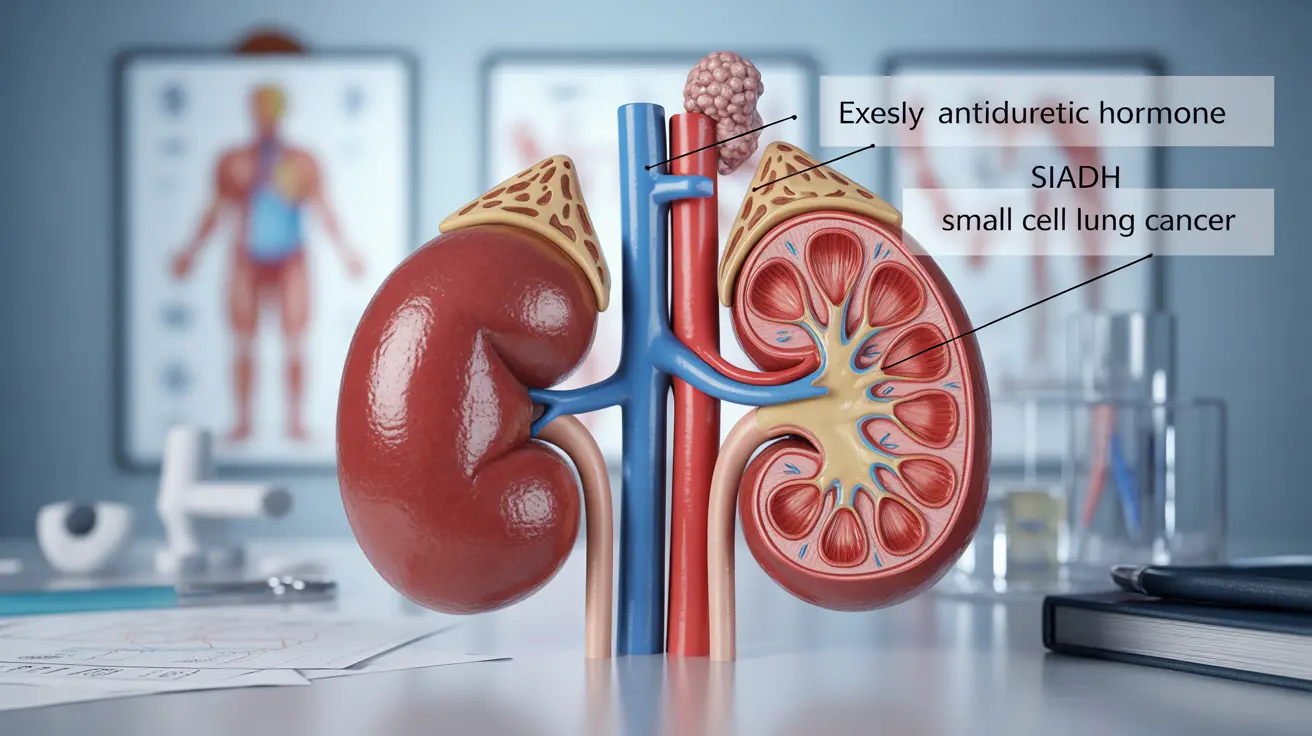Syndrome of Inappropriate Antidiuretic Hormone Secretion (SIADH) is a significant complication that can occur in patients with small cell lung cancer. Understanding this relationship is crucial for both patients and healthcare providers, as early detection and proper management can significantly impact treatment outcomes.
This comprehensive guide explores the connection between SIADH and lung cancer, including symptoms, diagnosis, and treatment options. We'll also examine how various cancer treatments can affect this condition and why this combination requires careful medical attention.
Understanding SIADH in Lung Cancer Patients
SIADH occurs when the body produces too much antidiuretic hormone (ADH), leading to water retention and decreased sodium levels in the blood. In small cell lung cancer patients, this condition frequently develops due to tumor cells producing excessive amounts of ADH.
The relationship between these conditions is particularly important because SIADH can be one of the first indicators of small cell lung cancer, sometimes appearing before other cancer symptoms become apparent.
Common Symptoms and Warning Signs
Recognizing the symptoms of SIADH in lung cancer patients is crucial for early intervention. Common signs include:
- Nausea and vomiting
- Headache
- Confusion or mental changes
- Muscle weakness or cramping
- Decreased appetite
- Fatigue
- Irritability
- Seizures in severe cases
Diagnostic Process
Diagnosing SIADH in lung cancer patients involves several key steps and tests:
- Blood tests to measure sodium levels
- Urine tests to assess osmolality
- Chest imaging to evaluate lung cancer status
- Assessment of kidney function
- Evaluation of other hormone levels
Treatment Approaches
Managing SIADH
Treatment options for SIADH in lung cancer patients typically include:
- Fluid restriction
- Salt supplementation
- Medications such as vasopressin receptor antagonists
- Regular monitoring of sodium levels
- Dietary modifications
Cancer Treatment Considerations
Managing both conditions simultaneously requires a careful balance. Treatment strategies must consider:
- The impact of chemotherapy on SIADH
- Potential fluid and electrolyte complications
- Monitoring of treatment response
- Adjustment of medications as needed
Impact of Cancer Treatment on SIADH
Cancer treatments can significantly affect SIADH management. While successful cancer treatment often improves SIADH symptoms, some therapies may temporarily worsen the condition. Regular monitoring and adjustment of treatment plans are essential for optimal outcomes.
Frequently Asked Questions
- What symptoms should I watch for that might indicate SIADH caused by small cell lung cancer?
Watch for symptoms such as persistent headaches, confusion, muscle weakness, nausea, and fatigue. These symptoms, particularly when combined with unexplained weight loss or respiratory issues, warrant immediate medical attention.
- How is SIADH diagnosed in patients with small cell lung cancer?
Diagnosis involves comprehensive blood and urine tests to measure sodium levels and osmolality, along with imaging studies to assess the lung cancer. Doctors will also evaluate kidney function and other hormone levels to confirm the diagnosis.
- What treatments are available to manage SIADH in people with small cell lung cancer?
Treatment options include fluid restriction, salt supplementation, vasopressin receptor antagonists, and careful monitoring of fluid and electrolyte balance. The treatment plan is typically customized based on severity and individual patient factors.
- Can chemotherapy for small cell lung cancer improve or worsen SIADH?
Chemotherapy can have varying effects on SIADH. While successful cancer treatment often improves SIADH symptoms, some patients may experience temporary worsening during treatment. Close monitoring is essential throughout the treatment process.
- Why does small cell lung cancer cause SIADH and low sodium levels?
Small cell lung cancer cells can produce excessive amounts of antidiuretic hormone (ADH), leading to increased water retention and dilution of sodium in the blood. This paraneoplastic syndrome is a common complication of small cell lung cancer.




